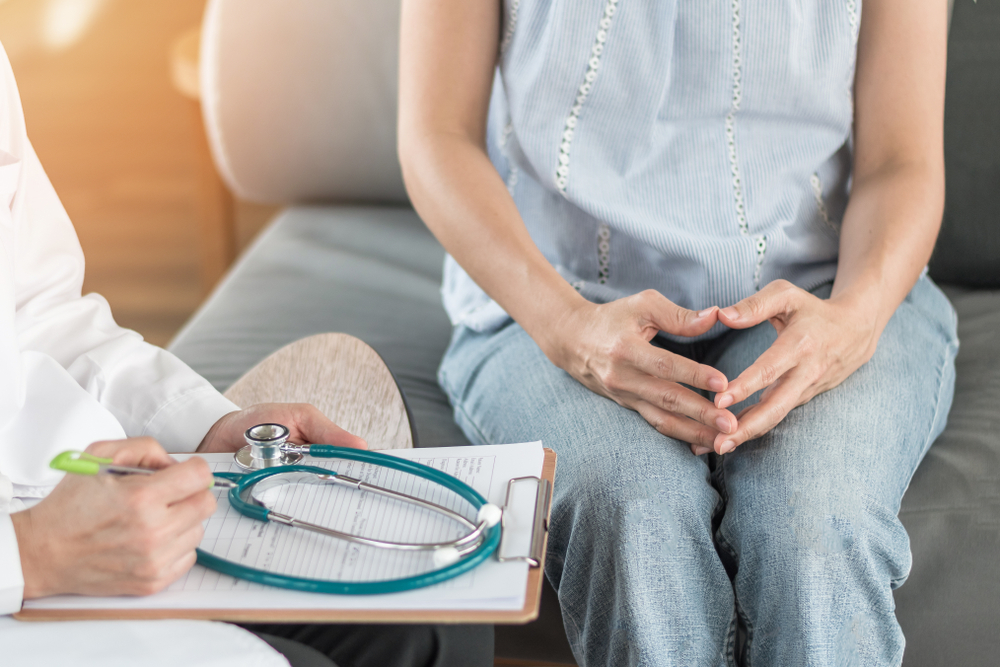A lot of people have periods, and this burden of femininity is often accompanied by pain.
However, while many accept painful periods as a part of life, they should not be that bad. If you suffer from extremely painful periods, it could be a sign that something else is at play.
In some cases, your painful periods could indicate that you are suffering from endometriosis which is actually more common than you would think.
Let’s explore:
Endometriosis Explained
Endometriosis is a disorder by which the tissue which usually lines the uterus grows beyond its bounds outside of the uterine cavity.
The tissue can grow on your ovaries, the lining of your pelvis, your bowel, or in some cases, outside of the pelvic region completely, although this is rare.
The hormone cycle your body goes through during menstruation affects the tissue, which leads to inflammation; when the tissue eventually breaks down, it has nowhere to go.
The trapped tissue can then cause irritation, the formation of scars, and it can leave behind adhesions.
This isn’t to mention the intense pain that the process itself can cause. Untreated endometriosis can also lead to fertility problems.
The Symptoms
In all honesty, the symptoms of endometriosis do vary. Some people only experience mild symptoms, which can often masquerade as a particularly painful or annoying period, and so it often goes undiagnosed.
In fact, those with moderate to severe symptoms still tend to write them off as a painful period and nothing more.
It is also worth pointing out that your endometriosis can be categorized as severe, but you yourself might experience very little or almost no discomfort.
The most common symptom relating to endometriosis is pelvic pain, Patient has more in-depth information on what exactly this might look like for you. This can be especially prevalent during your period.
You may also experience inordinately long periods or cramps that last for two or three weeks. Your periods might be heavy, or you might bleed between periods.
A lot of those with endometriosis also experience pain during sex and infertility issues.
Finally, you might also experience back pain.
Potential Treatments

Endometriosis, unfortunately, is not currently curable. However, there are a number of options that can be used to manage the symptoms. There are medications that can be trialed to alleviate the symptoms, or for those who have had no success with medication, there are surgical interventions. Finding the right treatment often comes down to trial and error.
Initially, whilst waiting for a formal diagnosis and treatment plan, a lot of women rely on over-the-counter pain relief like paracetamol or ibuprofen.
For some women with milder cases, they can be effective, but they won’t work for everyone.
Another treatment option is hormones. Taking the right hormones can halt the progression of endometriosis by regulating the menstruation process.
Often, the hormones provided will be contraceptives like the pill, the implant or the injection, but this is not always the case.
After pain relief and hormones, the options progress to surgery. The first option is conservative surgery.
This form of surgery aims to remove the endometrial growths to alleviate the pain without producing any damage to the reproductive organs. It is often performed laparoscopically, which makes it minimally invasive.
However, this won’t work for everyone because the growth can reoccur. The final treatment option is a hysterectomy which removes the uterus and often cervix completely.
A hysterectomy can effectively cure endometriosis, but some women are reluctant to consider them because it is a major surgery, and obviously, it removes all possibilities of getting pregnant or having a child naturally.
Diagnosis
A lot of people with periods incorrectly think that pain is a normal part of menstruation, but it isn’t necessarily. Periods should not hurt that badly.
Endometriosis has similar symptoms to a number of other conditions, which can make it harder to diagnose.
The diagnosis process can be long. It often starts with you providing your GP with a detailed history of your experiences as well as any family history of endometriosis.
Next, you will likely have to undergo an exam where a speculum is used so that your GP can see your cervix. This might also be done with an ultrasound.
Finally, you might be expected to undergo a surgical procedure known as a laparoscopy so that they can get a direct view of your uterus.
In Summary
Endometriosis doesn’t have any distinguishable cause as of yet and there also is no quick or simple cure, unfortunately.
That being said, there are a few treatments that can help you to manage the condition.
Although it is worth mentioning that a lot of the treatments for endometriosis have a significant crossover with contraceptive treatments and are therefore rife with potential side effects.
The diagnostic process can be long, but it is important that you stick with it because you need a formal diagnosis before anything changes.

